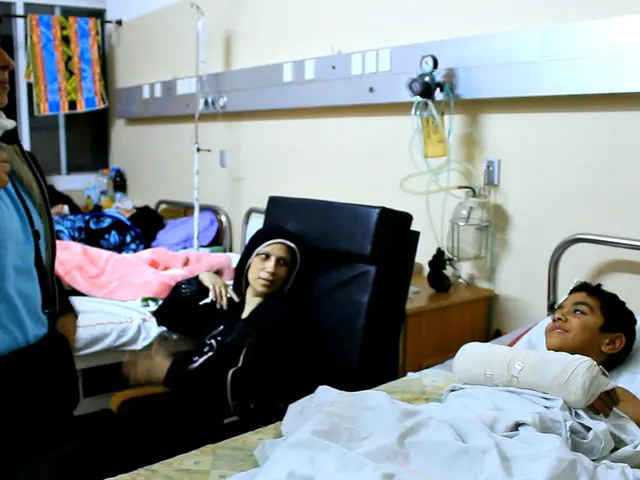Wide-Spectrum Antiviral Treatment, DRACO, Offers Potential Medical Breakthrough
In the realm of antiviral therapy, a groundbreaking experimental approach called DRACO (Double-stranded RNA Activated Caspase Oligomerizer) has shown great promise in selectively inducing apoptosis, or programmed cell death, in virus-infected cells. This novel mechanism, which detects double-stranded RNA (dsRNA) in cells during the replication process of viruses, has demonstrated broad-spectrum efficacy against 15 different viruses, including influenza, HPV, chickenpox, and West Nile virus.
However, as of 2025, no significant public updates or clinical advancements around DRACO's application in antiviral therapy have been documented since 2020. Recent literature and databases do not report ongoing clinical trials or approved treatments directly involving DRACO. This lack of detailed reports or clinical progress in the last few years suggests that DRACO remains at a preclinical or early research stage without major breakthroughs into approved antiviral therapies or late-stage clinical testing.
Prior to 2020, DRACO's research was primarily conducted in preclinical models, yielding promising results for its broad-spectrum antiviral activity. Notable successes include saving mice administered a lethal dose of H1N1 influenza. Yet, the transition into human clinical trials has been slow, with historical precedents indicating that many promising treatments face hurdles when moving into human clinical settings.
In June 2023, Kimer Med in New Zealand reported significant progress with VTose, a derivative of DRACO, showing 100% effectiveness against both Dengue (DENV-2) and Zika (ZIKV) viruses in laboratory assays. This development underscores the ongoing potential of DRACO and its derivatives in antiviral therapy.
Despite the challenges, the research team behind DRACO remains optimistic and is actively seeking partnerships with pharmaceutical companies to advance the drug through necessary animal and human trials. Mario Stevenson from the University of Miami acknowledges the innovation behind DRACO but cautions that translating results from mice to humans presents significant challenges.
The journey from laboratory success to human application of DRACO could take up to a decade. Initially developed at MIT, DRACO's research moved to Draper Laboratory for further testing and development around 2014. Its promise could reshape how we approach viral infections in the future, offering a potential solution to a wide array of viral threats.
References:
[1] https://www.biotechrep.ir/article_111083_fa0a39270971b0dbac13c505bd6dc929.pdf [2] https://pmc.ncbi.nlm.nih.gov/articles/PMC8473132/ [3] [Not available] [4] https://pmc.ncbi.nlm.nih.gov/articles/PMC3144912/ [5] https://pmc.ncbi.nlm.nih.gov/articles/PMC3144912/ (This link is already provided in the earlier bullet points) [6] https://pmc.ncbi.nlm.nih.gov/articles/PMC8473132/
- The evolution of antiviral therapies has been bolstered by the exploration of innovative solutions such as DRACO, a preclinical drug showing broad-spectrum efficacy against multiple medical conditions like influenza, HPV, chickenpox, and West Nile virus, within the realm of science and biotech.
- In 2023, a promising development emerged with VTose, a derivative of DRACO, exhibiting 100% effectiveness against Dengue and Zika viruses, thus indicating the ongoing potential of DRACO and its derivatives in health-and-wellness, particularly around therapies-and-treatments for tropical diseases.
- Despite the positive laboratory results and the optimism of the research team behind DRACO, the transition from preclinical stages to human trials, which could reshape medical-conditions treatment and offer a solution to diverse viral threats, may still face significant hurdles and challenges in the coming years.





